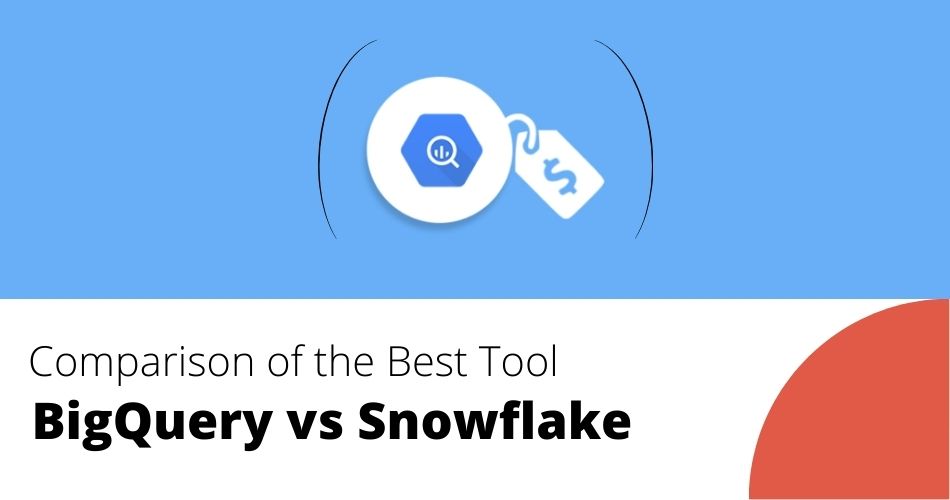
Bigquery vs Snowflake
(ETL) data warehouse technology, which is commonly classified as online analytical processing (OLAP), was launched by relational database management system (RDBMS) businesses in order to enhance corporate decision-making and business intelligence.
At its inception, it was intended to archive massive volumes of data from production databases in order to make them slim and mean in order to maintain high performance. In data warehousing, numerous copies of data are stored on various database servers, which are collectively referred to as data marts (data warehouse). The ETL Data Integration Services may be standalone or it can be part of a corporate data warehouse. The data is subsequently extracted and imported into two analytical data marts, which are located in different locations. Here, the data analysts design the algorithms that will be used to carry out their tasks.
What exactly is BigQuery?
BigQuery is serverless and managed hosting data warehouse that can be used to do scalability analysis on large amounts of information. PaaS (Platform as a Service) is the term used to describe this kind of service. BigQuery provides querying capabilities by using ANSI SQL. By allowing super-fast SQL, an enterprise data warehouse may be utilized to address issues by using the computational power of Google infrastructure.
The Importance of the BigQuery
As a company expands, managing the data dispersed across several apps becomes more difficult. Furthermore, it is difficult to examine the data included inside useful insight systems. The valuable engineering sources are often used in the process of establishing consolidated data storage. As a result of BigQuery, developers can devote their time to more important tasks such as evaluating business-critical data. Using BigQuery’s REST API, enterprises may create mobile front-ends as well as App Engine-based dashboards for their customers.
What exactly is Snowflake?
Founded in 2012, this cloud-based data warehousing startup specializes in business intelligence. Snowflake provides analytics services, as well as cloud-based data storage services, among other things. Snowflake is referred to as a “Data warehouse as a service” in the broad sense. Snowflake’s data cloud is driven by an innovative data platform that offers Software-as-a-Service capabilities (SaaS). It makes it possible to create data processing, storage, and analytics systems that are quicker, simpler, and more adaptable than conventional solutions.
The Importance of a Snowflake
Snowflake development services are built on a shared data architecture that spans several clusters. The architecture distinguishes between the computation and storage layers of the system. This will allow them to scale up automatically in response to demand without negatively influencing their performance in the process. Snowflake architecture, which is capable of managing both structured and semi-structured data, includes micro-partitioning as one of its features.
Snowflake has a number of advantages:
- Snowflake is a comprehensive ANSI SQL database and data warehouse that runs on the Microsoft SQL Server. Because of this, they provide an excellent starting point for Legacy Data Warehouses and Data Platforms looking to migrate into the ETL Data warehousing. They offer excellent interoperability with multi-statement transactions and sophisticated joins, among other things.
- Snowflake development services allow customers to segregate workloads throughout the organization and to enable various sections of the organization and different applications to access the service. As a result, the platform is capable of supporting data scientists, executive reporting, data analysts, and program managers all inside a single platform while retaining a single source of truth for all information.
- There is almost no limit to the number of simultaneous queries. Snowflake allows you to grow up as demand dictates, yet when demand is no longer necessary, Snowflake will automatically scale down to meet the needs of the business. All of your users will be able to access all of the data that they need at the same time, which will save you time.
- Queries on semi-structured data that run at a high speed. Snowflake gives rapid access to JSON, AVRO, ORC, and Parquet data, allowing you to get a more comprehensive picture of your company and customers, allowing you to gain deeper, more insightful insights.
- Scale-up, down, and out quickly and elastically, without interfering with the execution of ongoing queries. When the system is not in use, you will not be charged for compute time.
- Price for computing resources on a per-second basis, as well as pricing for cost-effective compressed data storage.
Benefits of BigQuery
- One of the most notable advantages of BigQuery is that it is very simple to use. Building a data center from scratch is not only costly, but it is also time-consuming and difficult to expand.
- Scalability is one of the most difficult aspects of data entry to deal with. Many businesses have difficulty determining how to correctly scale their data in order for it to make sense. With BigQuery, you won’t have to worry about scalability since it will be taken care of for you.
- BigQuery’s price is flexible and adapts to your needs. You are only charged for the resources that you use. It doesn’t matter if you need storage or computational resources; Google charges your firm just for the amount of time you spend using the product.
